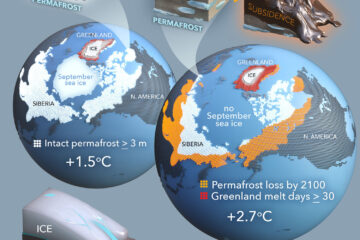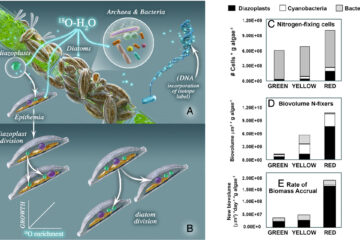Stable carbon isotope analysis reveals widespread drought stress in boreal black spruce forests
Unprecedented rates of climate warming over the past century have resulted in increased forest stress and mortality worldwide. Decreased tree growth in association with increasing temperatures is generally accepted as a signal of temperature-induced drought stress. However, variations in tree growth alone do not reveal the physiological mechanisms behind recent changes in tree growth. Examining stable carbon isotope composition of tree rings in addition to tree growth can provide a secondary line of evidence for physiological drought stress. In this study, we examined patterns of black spruce growth and carbon isotopic composition in tree rings in response to climate warming and drying in the boreal forest of interior Alaska. We examined trees at three nested scales: landscape, toposequence, and a subsample of trees within the toposequence. At each scale, we studied the potential effects of differences in microclimate and moisture availability by sampling on northern and southern aspects. We found that black spruce radial growth responded negatively to monthly metrics of temperature at all examined scales, and we examined ∆13C responses on a subsample of trees as representative of the wider region. The negative ∆13C responses to temperature reveal that black spruce trees are experiencing moisture stress on both northern and southern aspects. Contrary to our expectations, ∆13C from trees on the northern aspect exhibited the strongest drought signal. Our results highlight the prominence of drought stress in the boreal forest of interior Alaska. We conclude that if temperatures continue to warm, we can expect drought-induced productivity declines across large regions of the boreal forest, even for trees located in cool and moist landscape positions.


